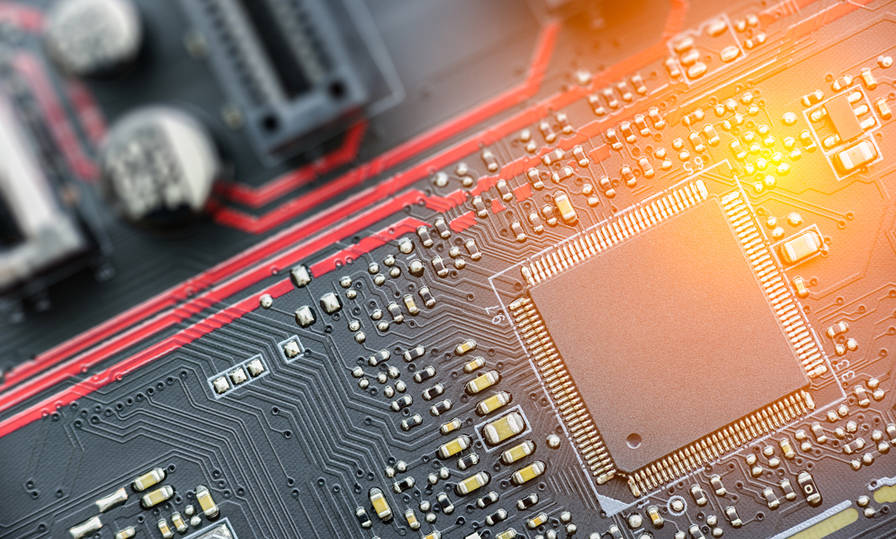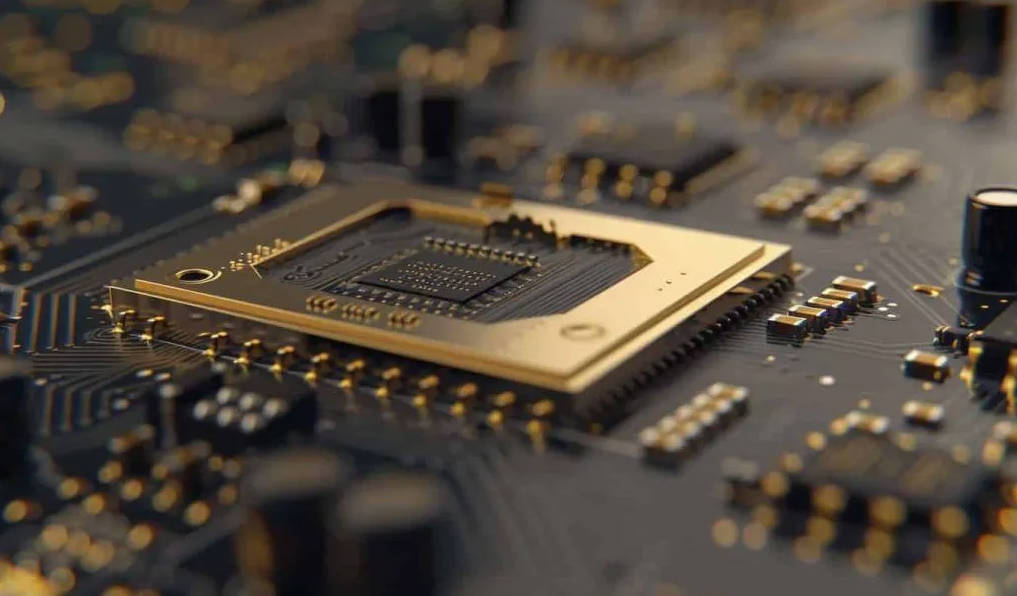1. Introduction to Aluminum PCBs
In the relentless march of electronic innovation, heat management has emerged as a critical battleground. As devices become more powerful, compact, and feature-rich, the challenge of dissipating the heat they generate intensifies. This is where the Aluminum PCB steps in, offering a robust solution to thermal challenges that traditional FR-4 PCBs simply cannot meet.

1.1 What is a PCB?
At its core, a Printed Circuit Board (PCB) is a laminated sandwich structure of conductive and insulating layers, designed to mechanically support and electrically connect electronic components using conductive pads, tracks, and other features etched from copper sheets. They are the backbone of virtually all modern electronic devices.
1.2 Why Aluminum? The Need for Enhanced Thermal Management
Traditional PCBs, typically made from fiberglass (FR-4), are excellent electrical insulators but poor thermal conductors. In applications involving high-power components like LEDs, power supplies, or motor drivers, the heat generated can quickly accumulate, leading to:
- Reduced component lifespan
- Decreased performance and efficiency
- System instability or even catastrophic failure
Aluminum PCBs were developed precisely to combat these issues. By leveraging the superior thermal conductivity of aluminum, they efficiently draw heat away from hot components, ensuring stable operation and extended device longevity.
1.3 Key Advantages of Aluminum PCBs
Beyond their primary thermal benefits, Aluminum PCBs offer a suite of advantages including enhanced mechanical stability, improved durability, and sometimes even EMI shielding. They are becoming indispensable in high-power and high-temperature applications.
2. The Unique Structure of an Aluminum PCB
The magic of an Aluminum PCB lies in its distinctive layered construction, which optimizes both electrical insulation and thermal dissipation. Unlike a standard FR-4 board, which primarily uses fiberglass as its core, an aluminum PCB replaces this with a metallic base.
2.1 Cross-Sectional Breakdown: Layers Explained
An Aluminum PCB typically consists of three or four main layers, each with a specific function:
2.1.1 Circuit Layer (Copper Foil)
This is the topmost layer, where the electronic circuit patterns are etched. Made of copper foil, it’s similar to the circuit layer on an FR-4 PCB. Common thicknesses range from 1 oz (35 µm) to 2 oz (70 µm), but thicker copper (up to 6 oz or more) can be used for high current applications. The copper traces conduct electricity between components.
2.1.2 Dielectric Layer (Insulating Layer)
Beneath the copper layer lies the dielectric layer, also known as the thermal insulating layer or prepreg. This is the heart of the aluminum PCB’s thermal performance. Its composition is crucial:
- Function: It provides electrical insulation between the circuit layer and the aluminum base, preventing short circuits. Simultaneously, it must efficiently conduct heat from the components on the copper layer down to the aluminum base.
- Composition: This layer is typically made of a polymer filled with ceramic particles, giving it high thermal conductivity while maintaining excellent electrical insulation.
- Importance of Thermal Conductivity (W/m·K): The thermal conductivity of this dielectric layer is the most critical parameter for an Aluminum PCB’s heat dissipation capability. A higher W/m·K value means heat transfers more quickly and efficiently through this layer. Typical values range from 1.0 W/m·K to over 8.0 W/m·K, significantly higher than FR-4’s ~0.3 W/m·K.
2.1.3 Aluminum Base Layer
This is the foundation of the Aluminum PCB. It’s a thick layer of aluminum alloy that provides:
- Excellent Heat Dissipation: Its high thermal conductivity (typically 150-200 W/m·K) acts as a highly efficient heat spreader and heatsink, rapidly moving heat away from the dielectric layer and into the surrounding environment.
- Mechanical Stability: The aluminum base provides rigidity and strength to the PCB, making it robust and durable.
- Cost-Effectiveness: Aluminum is relatively abundant and cost-effective, contributing to the overall economic viability of custom aluminum PCB solutions.
Common types of aluminum used include:
| Aluminum Alloy | Thermal Conductivity (W/m·K) | Characteristics | Common Applications |
| Al 1060 | ~200 | High purity, excellent thermal conductivity | General purpose, high thermal demanding applications |
| Al 5052 | ~138 | Good strength, corrosion resistance | Structural applications, marine environments |
| Al 6061 | ~167 | Good strength, weldability, heat treatable | More demanding mechanical applications |
2.1.4 Optional: Aluminum Base Membrane (Bottom Layer)
In some specialized designs, an additional thin protective membrane or insulating layer may be applied to the bottom of the aluminum base to provide further electrical isolation or protection, especially if the aluminum base directly contacts a metal chassis.
3. Understanding Heat Conductivity in Aluminum PCBs
The primary reason to opt for an Aluminum PCB is its superior ability to manage heat. Understanding how this process works is key to effective aluminum PCB design.
3.1 How Aluminum PCBs Dissipate Heat
The process of heat dissipation in an Aluminum PCB can be visualized as a thermal highway:
- Heat Generation: Electronic components (e.g., LEDs, ICs) generate heat on the circuit layer.
- Heat Transfer to Dielectric: This heat is then conducted directly downwards into the dielectric layer.
- Heat Spreading via Aluminum: Due to the high thermal conductivity of the dielectric, heat rapidly passes through it and spreads out across the entire aluminum base layer.
- Heat Dissipation to Environment: The large surface area of the aluminum base, often coupled with a heatsink or direct contact with a metal enclosure, then efficiently dissipates this heat into the ambient air, preventing localized hotspots and maintaining optimal component temperatures.
In contrast, an FR-4 PCB relies more heavily on copper traces for heat spreading and often requires complex thermal vias or external heatsinks directly attached to components, which can be less efficient and add to complexity and aluminum PCB cost.
3.2 Key Thermal Performance Metrics
When evaluating an Aluminum PCB, two primary metrics define its thermal efficiency:
3.2.1 Thermal Conductivity (W/m⋅K)
- Explanation: Thermal conductivity measures a material’s ability to conduct heat. In the context of Aluminum PCBs, it’s most crucial for the dielectric layer. A higher value indicates better heat transfer.
- Significance: A high thermal conductivity dielectric layer ensures that heat quickly moves from the hot components to the aluminum base, preventing temperature buildup at the component-PCB interface.
- Typical Values for Dielectric Materials:
- Standard FR-4: ≈0.2−0.3 W/m⋅K
- Standard Aluminum PCB Dielectric: ≈1.0−3.0 W/m⋅K
- High-Performance Aluminum PCB Dielectric: >5.0 W/m⋅K
3.2.2 Thermal Resistance ($\text{^\circ C/W}$)
- Definition: Thermal resistance quantifies how effectively a material or system impedes the flow of heat. It’s the inverse of thermal conductance. Lower thermal resistance indicates better heat dissipation.
- Relation to Heat Dissipation: For an Aluminum PCB, a low overall thermal resistance from component to ambient is desired. The lower the resistance, the smaller the temperature rise for a given power dissipation.
3.3 Factors Influencing Heat Dissipation Performance
Effective aluminum PCB design goes beyond just choosing an aluminum substrate. Several factors play a critical role:
- Dielectric Layer Thickness and Material: Thinner dielectric layers with higher thermal conductivity offer superior heat transfer.
- Copper Trace Width and Thickness: Wider and thicker copper traces can help spread heat laterally before it travels down to the aluminum, though their primary role is electrical.
- Component Placement and Thermal Pad Design: Placing high-power components directly over the aluminum base with large thermal pads greatly enhances heat transfer.
- Overall PCB Layout Considerations: Minimizing thermal pathways, utilizing thermal vias (though less critical than in FR-4), and ensuring adequate air circulation around the board all contribute to optimal thermal management.
4. Common Applications of Aluminum PCBs
The exceptional thermal properties of Aluminum PCBs make them ideal for a wide array of applications where heat management is paramount.
4.1 LED Lighting
This is perhaps the most ubiquitous application. High-power LEDs generate significant heat, which, if not properly managed, can drastically reduce their lifespan and light output. Aluminum PCBs are the go-to solution for LED streetlights, automotive headlights, high-bay lighting, and architectural lighting due to their ability to efficiently dissipate this heat.
4.2 Power Electronics
Devices that handle substantial electrical power, such as:
- Power Supplies: AC/DC converters, DC/DC converters.
- Inverters: For solar panels, uninterruptible power supplies (UPS).
- Motor Controllers: In industrial equipment and electric vehicles.
These all benefit immensely from the thermal capabilities of Aluminum PCBs to keep power transistors and rectifiers cool.
4.3 Automotive Electronics
The harsh operating conditions in vehicles, including wide temperature fluctuations and vibrations, demand robust and thermally efficient solutions. Aluminum PCBs are used in automotive headlights, engine control units (ECUs), dashboard displays, and power steering systems. Their durability and heat dissipation ensure reliability in critical vehicle functions.
4.4 Medical Devices
Many advanced medical instruments, such as surgical lighting, diagnostic equipment, and medical imaging systems, generate heat and require precise temperature control for accurate operation and patient safety. Custom aluminum PCB solutions are often employed here for their reliability and thermal performance.
4.5 Audio Equipment
High-power audio amplifiers and sound systems generate considerable heat. Aluminum PCBs help dissipate this heat, preventing thermal shutdown and ensuring consistent, high-fidelity audio output.
5. Benefits and Considerations for Users
For users evaluating whether to choose an Aluminum PCB, it’s crucial to understand both the compelling advantages and the practical considerations involved in aluminum PCB design, aluminum PCB prototyping, and production.
5.1 Advantages of Choosing Aluminum PCBs
- Superior Thermal Performance and Extended Component Lifespan: This is the primary benefit. By effectively removing heat, Aluminum PCBs significantly extend the operational life of heat-sensitive components like LEDs and power transistors. This leads to lower warranty claims and increased product reliability.
- Improved Reliability and Stability of Electronic Products: Consistent operating temperatures mean fewer performance degradations or failures, leading to more stable and reliable end products.
- Smaller Form Factors Due to Efficient Heat Removal: Because heat is dissipated so efficiently, designers can often pack components more densely or reduce the need for bulky external heatsinks, leading to more compact and aesthetically pleasing designs.
- Good Mechanical Stability and Durability: The aluminum base provides excellent rigidity and resistance to thermal expansion and contraction, making the PCBs robust and durable, especially in harsh environments.
- EMI Shielding Capabilities: The aluminum base can act as an effective electromagnetic interference (EMI) shield, reducing noise and improving signal integrity, which is a significant bonus in sensitive applications.
5.2 Design Considerations for Aluminum PCBs
While advantageous, designing with aluminum PCBs requires specific considerations:
- Component Selection for High-Power Applications: Ensure chosen components are compatible with the thermal characteristics and soldering processes for aluminum boards.
- Thermal Design Guidelines: Focus on maximizing contact between hot components and the dielectric/aluminum base. Utilize exposed thermal pads on components and design the layout to facilitate direct thermal pathways.
- Manufacturing Tolerances and Capabilities: Work closely with your wholesale aluminum PCB manufacturer. They will have specific guidelines regarding drill sizes, trace widths, and dielectric material options suitable for their processes.
- Single-Sided vs. Double-Sided Aluminum PCBs: While single-sided aluminum PCBs are common, double-sided designs (with copper on both sides, requiring a more complex multi-layer structure) exist but are far less common due to manufacturing complexity and cost.
5.3 Cost Implications
When considering aluminum PCB cost, it’s essential to look beyond the initial unit price:
- Initial Cost: The per-unit aluminum PCB cost can be slightly higher than standard FR-4 PCBs, primarily due to the specialized dielectric material and manufacturing processes.
- Long-Term Benefits: However, this initial investment is often offset by significant long-term savings from:
- Reduced warranty claims and field failures due to enhanced reliability.
- Elimination or reduction of bulky external heatsinks, potentially lowering overall system cost and size.
- Extended product lifespan, leading to greater customer satisfaction and potentially higher sales.
For aluminum PCB prototyping, costs can vary based on complexity and quantity. It’s advisable to consult with manufacturers early in the design phase.
6. Frequently Asked Questions (FAQs)
Users often have specific questions when considering Aluminum PCBs for their projects. Here are some of the most common ones:
6.1 When should I choose an Aluminum PCB over an FR-4 PCB?
You should choose an Aluminum PCB when your electronic design includes high-power components that generate significant heat (e.g., high-brightness LEDs, power regulators, motor drivers) and requires efficient heat dissipation to ensure reliability, performance, and a longer lifespan. If thermal management is a critical concern, aluminum is the superior choice.
6.2 What are the typical thermal conductivity values I should look for in the dielectric layer?
For most applications requiring good thermal performance, look for a dielectric layer with a thermal conductivity of at least 1.0 W/m·K. For high-power or demanding applications, values ranging from 2.0 W/m·K to over 8.0 W/m·K are available and recommended.
6.3 Can Aluminum PCBs be multilayered?
Yes, multilayer aluminum PCBs exist, but they are less common and more complex than single-sided designs. They typically involve multiple copper layers laminated onto a single aluminum base or sometimes multiple aluminum layers separated by dielectric. However, their complexity significantly increases manufacturing difficulty and aluminum PCB cost. For most thermal management needs, single-sided designs are sufficient and more cost-effective.
6.4 What are the common challenges in designing with Aluminum PCBs?
Challenges primarily revolve around:
- Material Selection: Choosing the right dielectric material with appropriate thermal and electrical properties.
- Thermal Management Layout: Ensuring optimal placement of heat-generating components and efficient thermal paths.
- Manufacturing Limitations: Understanding the specific capabilities of your custom aluminum PCB manufacturer regarding drilling, routing, and specialized processes.
- Electrical Isolation: Carefully managing the electrical isolation between the circuit layer and the conductive aluminum base.
6.5 How does the thickness of the dielectric layer affect thermal performance?
A thinner dielectric layer generally leads to better thermal performance because heat has a shorter path to travel from the circuit layer to the aluminum base. However, there’s a trade-off: a thinner dielectric also means less electrical insulation, so the thickness must be carefully selected to meet both thermal and electrical isolation requirements.
6.6 Are there different types of aluminum used, and does it matter?
Yes, different aluminum alloys (e.g., Al 1060, Al 5052, Al 6061) are used. While all offer good thermal conductivity, their mechanical properties (strength, hardness, workability) and specific thermal conductivity values vary slightly. For most standard Aluminum PCB assembly applications, Al 1060 is common due to its high thermal conductivity and purity. For applications requiring greater mechanical strength, other alloys might be considered.
7. Conclusion
The Aluminum PCB stands as a cornerstone technology for modern electronics, particularly in high-power applications where efficient thermal management is non-negotiable. Its unique structure, featuring a highly conductive dielectric layer and a robust aluminum base, enables electronics to operate cooler, last longer, and perform more reliably.
As electronic components continue to shrink while increasing in power, the demand for superior thermal solutions will only grow. Understanding the structure, benefits, and design considerations of the Aluminum PCB is vital for engineers and product developers seeking to create reliable, high-performance electronic devices. Investing in quality aluminum PCB prototyping and working with experienced wholesale aluminum PCB suppliers will be key to unlocking the full potential of this indispensable technology. The future of electronics is cool, thanks in large part to the humble yet powerful aluminum printed circuit board.



